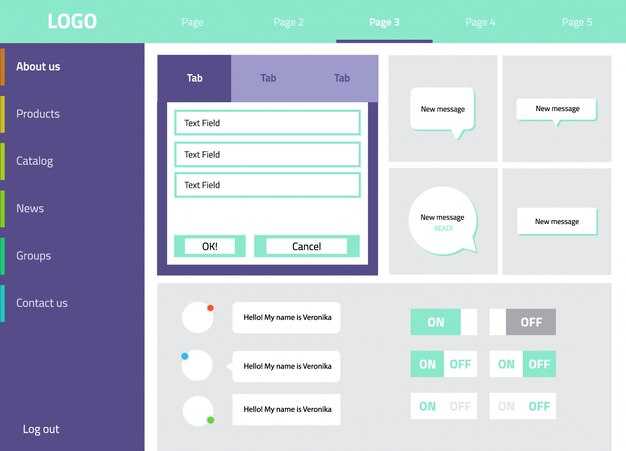Immediate action: arrange a primary-care or gynecology visit and a brief neurological screen within two weeks if desire for touch is markedly reduced; studies show 40–60% of low-drive cases have a biologically measurable component – low hormones, thyroid issues or medication effects – and tracking menstrual patterns for three cycles raises diagnostic chances substantially.
Do this before assuming the problem is relational: document sleep, mood, pain during sex, recent stressors and any past trauma; connect those datapoints with lab results (testosterone, estradiol, TSH) and a simple neuro review – decreased libido can be neurological, endocrine or psychosocial, and targeted treatment becomes more effective when teams share concrete metrics.
When talking, avoid dismissive language that frames feelings as silly; many people AFAB report that their experience wasnt believed or taken seriously, which shifts thinking toward avoidance. Cultural taboo around desire variations shortens the chances of early help, increases shame, and can make a partner less likely to live fully engaged with a devoted companion – simple validation improves adherence to therapy and gives a higher probability of sustained improvement over the lifespan.
This article offers eight clearly defined drivers and practical steps to try first: what to measure, what medical referrals to request, how long to wait for hormonal adjustments to become apparent, communication scripts that feel better than platitudes, and realistic outcomes to expect about timelines and chances of change.
Focused action plan: pinpoint causes, spot signs and try practical fixes for low interest in physical intimacy
Assess libido objectively over 14 days: record a daily 0–10 desire score, sleep hours, medications, contraception type, partner contact, mood, episodes of shame or intrusive thoughts, and any sexual activity; use these details to compare yourself versus baseline and share the log with a clinician.
Order a diagnostic blood panel and pelvic review: test total and free testosterone, estradiol, progesterone, prolactin, TSH, and metabolic markers; if breastfeeding check prolactin and milk production; a pelvic exam or ultrasound can evaluate the womb for major pathology; document medication effects (antidepressants, antihypertensives, hormonal contraception) as established brakes on desire.
Address relationship and psychological drivers with targeted steps: book 6–12 sessions of sex-focused CBT or EMDR for trauma, practice non-sexual touch together for two weeks to rebuild connection, name deepest fears without judgement to stop shame cycles, and consider couples sessions to set mutual boundaries and respect; include partners in the plan so they can see details and adjust behaviour.
Implement practical fixes and timelines: switch or trial an alternative contraception method with a 6–12 week window to detect effects; consult prescriber before changing meds and allow 8–12 weeks to assess difference; improve sleep–aim for consistent 7–9 hours so libido is less affected by fatigue–track how often you slept poorly and reduce alcohol and nicotine; add pelvic-floor physiotherapy, targeted strength training and 20–30 minutes of moderate cardio thrice weekly to boost hormones and arousal response.
Use actionable bedroom strategies: schedule short intimate windows twice weekly, start with non-demanding touch and sensual rituals to create safety, use water-based lubrication and erotica for sensory prompts, stop performance talk, and allow experimentation with timing and positions; if desire is less during certain lifecycle phases or lifespan events (postpartum, perimenopause) treat those as medical contexts rather than moral failures.
Escalate when red flags appear: sudden, severe decline, pain with sex, bleeding, or signs of major endocrine disorder require urgent referral to gynecology or endocrinology; for persistent low desire after 3–6 months of combined medical and psych interventions request a diagnostic review and evidence-based referral to specialists who can offer hormonal therapy or advanced modalities with scientific reference studies.
For partners and mates: communicate choices and limits clearly, avoid blaming language, respect pacing, and let those close to you know practical steps being doing; if loyalty or trust is questioned, include a neutral therapist to restore safe connection and to differentiate partner issues versus individual biological causes.
Keep a concise reference checklist below: 14‑day desire log, medication and contraception list, sleep diary, baseline labs, pelvic exam results, short-term therapy plan, and agreed partner actions; revisit this packet every 8–12 weeks to measure progress, adjust choice of interventions, and reduce shame while restoring wellbeing for themselves and those together.
Trauma and past abuse: how to identify triggers, safety steps and where to find trauma-informed help
If youre triggered during touch or sexual situations, pause contact immediately, use a pre-agreed safe word or gesture, move to a neutral space, practice 5-4-3-2-1 grounding, and contact a named support person before any further interaction.
- How to identify triggers – concrete signs
- Sensory: specific smells, skin sensations, certain types of pressure, or sounds that produce sudden anxiety, freezing, or dissociation.
- Situational: locations tied to prior abuse (school, bedroom, church), phases such as puberty or milestones like pregnancy, or dynamics (partner constantly questioning, married dynamics that replicate past control).
- Emotional and physiological: sharp shame, sudden flooding of emotions, heart racing, nausea, a high arousal state tied to dopamine spikes or crash, or rapid shutdown of speech and movement.
- Behavioral pattern: avoidance of sex-related topics, refusal to wade into conversations about sexuality, or shutting down during affectionate gestures.
- Temporal reference: note whether reactions happen only at night, during anniversaries, or around developmental phases – tracking over a lifespan-based calendar helps clarify patterns.
- Practical assessment steps you can use
- Keep a brief trigger log: date, context, preceding events, sensations, intensity (0–10), and whether the reaction resolved within 20–60 minutes.
- Map triggers versus non-triggers: list safe touch, speech, and settings so partners and clinicians have clear reference points.
- Use clinical screening tools: ACE checklist, PTSD CheckList (PCL-5), or short validated questionnaires available via clinics to quantify risk and need for referral.
- Share findings with a trauma-informed clinician before re-engaging in situations that previously caused damage.
- Immediate safety steps during a trigger
- Use the pre-agreed script: “Stop – I need space.” If youre alone, move to a well-lit public area, call a trusted contact, or use an established safe word with a partner.
- Regulate the nervous system: paced breathing (4-6 breaths per minute), cold water on the face, or changing posture to increase vagal tone and lower high arousal.
- Avoid alcohol or drugs in moments of high distress; substance use increases risk of retraumatization and reduces accurate consent.
- Create an exit plan for intimate situations: clear boundaries about what is off-limits, time-limited engagement, and who will intervene if boundaries are crossed.
- Longer-term safety and rebuilding connection
- Negotiate gradual re-exposure: brief, scripted exercises with explicit consent and metadata (who, where, how long) rather than open-ended encounters.
- Use somatic practices guided by an experienced clinician to retrain the brain and dopamine-mediated reward circuits toward safe touch.
- Partner education: partners should learn about shame, microviolations, and how to avoid doing wrong things that replicate control; relational repair requires repeated, consistent safety actions, not only apologies.
- Address medical risks: when abuse was sexually transmitted or caused physical harm, seek clinical follow-up and document damage for medical and legal reference.
- Where to find trauma-informed help
- Clinical modalities to seek: EMDR, Cognitive Processing Therapy (CPT), Trauma-Focused CBT, Somatic Experiencing, Sensorimotor Psychotherapy; search these terms plus “trauma-informed” when vetting clinicians.
- Provider types: licensed clinical psychologists, psychiatrists familiar with trauma, licensed clinical social workers, and certified somatic therapists; ask about specialization in sexual trauma and lifespan care during intake.
- Specialty services: sexual assault response centers, community crisis centers, perinatal trauma clinics, and university-affiliated clinics that accept sliding-scale fees.
- How to vet a clinician quickly: ask whether treatment is evidence-based, whether they track symptoms with validated measures, how they manage boundaries, and whether they include partners when appropriate.
- Hotlines and directories: national sexual assault hotlines, local rape crisis centers, and professional registries for EMDR or trauma therapy are reliable starting points – keep these numbers accessible.
Practical checklist to carry with you: one-sentence safety script, name of 1–2 emergency contacts, clinician contact, preferred grounding technique, and a short trigger log. If shame or suicidal thoughts are present, contact emergency services or a crisis line immediately – delay raises risk and requires urgent attention.
Medications and libido: what to ask your prescriber, how to track side effects and alternative options
Ask your prescriber for a clear list of likely offending medications, expected timeline for sexual side effects, specific labs they will order, and a written plan for dose adjustment or switching–insist they document rationale and safety monitoring before any change. Request baseline tests: total testosterone, estradiol if relevant, prolactin, TSH, fasting glucose and lipids, and a pregnancy test if a child is possible; note that some changes are related to hormones while others reflect central neurotransmitter effects.
Keep a structured side‑effect log: date, medication and dose, libido rating 0–10, orgasm frequency, arousal level, lubrication, partner interactions, sleep hours and quality, mood score, menstrual phases or menopausal status, alcohol/cannabis use, and any sudden drops or improvements. Use validated tools alongside the log–ASEX (Arizona Sexual Experience Scale, items 1–6; score ≥19 or any item ≥5 suggests dysfunction) or CSFQ (female cutoff ≈41) –and bring those scores to appointments. Record timing of onset: many serotoninergic agents produce decreased desire within 1–6 weeks; prolactin‑raising antipsychotics can have a delayed effect.
When saying which alternatives exist, mention classes and tradeoffs: SSRIs/SNRIs commonly carry the highest risk of sexual side effects (literature reports ranges up to ~50% in some samples); bupropion and mirtazapine show lower rates; vortioxetine and vilazodone may have reduced impact for some people. Discuss augmentation (add‑on bupropion or low‑dose trazodone) versus switching medications, and never stop abruptly–agree a taper or cross‑taper plan for safety. For hormone‑related lack of desire, a short trial of transdermal testosterone can have potential benefit in postmenopausal individuals but requires baseline cardiovascular and liver assessment and informed consent about risks and appearance changes like acne or hair growth.
Nonpharmacologic interventions to offer in the same care plan: targeted sex therapy, CBT for desire discrepancy, pelvic floor physiotherapy, sleep optimization (treat sleep apnea; prioritize consistent sleep that improves libido response), structured exercise, alcohol reduction, and partner communication exercises. Acknowledge cultural belief and taboo around desire–online image sites such as facebook groups or thefemininewoman can shape expectations about being attractive or beautiful and sometimes keep harmful myths alive; bring those details into clinical conversations so the prescriber understands the social context behind symptoms.
Track response thresholds and escalation criteria: if validated scores drop by >30% or ASEX/CSFQ remain in dysfunction range after 4–8 weeks, schedule a medication review. Ask the clinician to place monitoring steps in the chart and to discuss fertility plans if a child is desired. If you experience sudden libido changes, sexual aversion, or emotional deterioration, seek prompt reassessment because the balance between therapeutic benefit and sexual health risk can shift rapidly. Maintain agency by keeping copies of your logs, asking for second opinions if attention is lacking, and insisting on safety measures and clear documentation of potential benefits and risks behind any pharmacologic or hormonal trial.
Hormonal and medical contributors: essential tests to request and a symptom checklist to bring to appointments

Request this targeted panel at your appointment:
| Δοκιμή | Why / how to interpret |
| Serum hCG (pregnancy) | Rule out pregnancy or early postpartum state; positive result changes medication choice and explains milk production or sudden libido change. |
| CBC (hemoglobin/hematocrit) | Anemia lowers energy and desire; losing blood (heavy menses) increases risk of low Hb. Target: correct deficits rather than only treating symptoms. |
| Ferritin, iron studies | Ferritin <50 ng/mL often links to fatigue and low drive; replacing iron can show rapid improvement. |
| TSH, Free T4, Free T3, thyroid antibodies | Overt or invisible hypothyroidism can create fatigue, weight change, anxiety and reduce response to arousal. Check antibodies if symptoms persist despite normal TSH. |
| AM cortisol (or 24‑hr profile) | High or chronically dysregulated cortisol associates with anxiety, emotional brake on desire and poor sleep; abnormal values suggest adrenal evaluation. |
| Prolactin | Hyperprolactinemia causes amenorrhea, milk production and reduced libido; intermittent stress can raise levels–draw fasting, not immediately after exam. |
| Estradiol, FSH, LH (timed) | Day‑3 FSH/estradiol for menopause assessment; mid‑cycle or cycle‑day‑specific values help explain low attraction or lubrication changes. |
| Serum total and free testosterone, SHBG | Low androgen can act like a physiological brake on interest and arousal; measure in morning and interpret together with SHBG. |
| DHEA‑S, 17‑OH progesterone | Assess adrenal contribution to androgen balance and unexplained symptoms. |
| HbA1c, fasting glucose, fasting insulin | Insulin resistance and diabetes affect mood, energy and vascular response; A1c ≥6.5% meets diabetes threshold. |
| Vitamin D 25‑OH | Low levels correlate with fatigue and mood changes; many clinicians aim for >30–50 ng/mL depending on symptoms. |
| Basic metabolic panel, liver enzymes | Medication metabolism, hepatic causes and electrolyte issues can create systemic symptoms that reduce desire. |
| CRP or ESR | Systemic inflammation can blunt libido and cause pain syndromes. |
| STI screening (NAAT for GC/chlamydia, RPR, HIV as indicated) | Infections can cause pain, discharge, anxiety about transmission and relationship strain. |
| Urinalysis, urine culture | Rule out recurrent UTI as a pain or avoidance trigger. |
| Pelvic exam ± vaginal swabs, pelvic ultrasound | Detect structural, infectious or dermatologic causes (vaginal atrophy, ovarian cysts, lichen). Ultrasound especially if pelvic pain or irregular bleeding. |
| Medication review (list) | Identify drugs that reduce desire (SSRIs, SNRIs, beta‑blockers, hormonal agents, opioids); stopping or adjusting could restore response. |
| Neuro/imaging referral | If neurologic signs (sensory loss, radicular pain) or unexplained central symptoms, MRI or neuro consult may be needed. |
Bring a one‑page symptom checklist that shows pattern, severity and triggers – a clear message saves time and creates a better clinical response:
– Timeline: date symptoms began, whether onset was sudden or gradual, and any events (surgery, childbirth, emergency hospitalization) where things changed.
– Cycle data: last menstrual period, typical length, any amenorrhea, breastfeeding or milk production and contraceptive method; note if theyve stopped or started hormones.
– Desire and arousal: describe almost daily fluctuations, how often feeling attracted or attracted to partner, and whether lubrication or orgasm ability changed.
– Pain and discomfort: location, severity (0–10), timing (penetration, after, unrelated), factors that worsen or relieve pain.
– Mood and anxiety: presence of anxiety, panic, humiliation linked to activity, loss of interest, sleeping changes, and recent weight loss or gaining.
– Medications and supplements: drug name, dose, start date, reason; include over‑the‑counter and herbal products.
– Past medical and surgical history: pelvic surgeries, cancer treatment, thyroid disease, autoimmune diagnoses; list dates and outcomes.
– Social and relational context: recent partner changes, abusive events, trauma history, whether talking together with a partner is possible during visit.
– Functional impact: does the activity feel like a chore, create distress, or lead to avoiding shared activities that used to feel attractive?
Ideally bring prior lab results and imaging, a printed medication list, and a short written message of priorities so the clinician can show which tests to order together; this reduces repeat draws, lowers risk of missing key data and speeds a deeper diagnostic pathway. According to common practice, time specific tests (testosterone in AM, progesterone 7 days post‑ovulation or day 21) and ask for free + total values where available. If pain or mental health concerns involve humiliation or trauma, request an integrated plan that includes pelvic pain specialists, pelvic physiotherapy and mental health support – everyone on the care team should see the same checklist to avoid invisible gaps.
Stress, sleep and daily habits: simple routines to reduce tension and support desire
Fix the sleep window: aim for 7–8 hours nightly, lights-out within a 30–60 minute range and wake time consistent across weekdays and weekends. Track sleep in a diary or with an actigraphy app for 14 days; limit naps to 20–30 minutes to avoid long daytime sleep that fragments night sleep; set a caffeine cutoff six hours before bedtime and avoid alcohol within three hours of lights-out.
Daily tension protocols: perform box breathing (4‑4‑4‑4) for five minutes on waking and before bed; add a 10–15 minute progressive muscle relaxation session after work; schedule three 5‑minute micro-walks per workday (every 90 minutes) to lower cortisol spikes. Maintain moderate aerobic activity 30–45 minutes, 3–5 times per week and one resistance session twice weekly; join a group fitness class if accountability raises adherence.
Basic medical checklist: test for infections when pain, unusual discharge or other symptoms appear; treat promptly because untreated infections can reduce desire and spread to partners. Postpartum adjustments after a baby can last months to years–a mother’s libido may change suddenly and the difference between short recovery and persistent low desire requires clinical follow-up. Anxiety about sperm or pregnancy risk lowers arousal for many; confirm reliable contraception or STI status to remove that barrier.
Relationship and behavioral habits: schedule three 15‑minute low-pressure check-ins per week focused on connection, not performance; ask for specific feedback and give feedback that is descriptive, not evaluative, to keep communication constructive. Desire often responds to genuine affection and devotion rather than sudden attempts to trigger lust; committed partnerships benefit from clear choices about physical closeness and from partners who value each other’s boundaries. Small consistent acts matter: a shared 10‑minute walk, a hand on the back while making coffee, less screen use at night.
How to use resources: when you want practical drills and quick demonstrations, consult curated content in this article–weve included links and videos by thefemininewoman and other clinicians. Track which activity, timing or conversation produces measurable change over 4–8 weeks and adjust based on partner feedback; this requires patience, repeated choice and genuine curiosity about what makes a womans body and a womans mind respond differently across years.
Emotional disconnection with a partner: short conversation scripts to request closeness without pressuring sex

Ask for a specific, time‑boxed, non‑sexual gesture using an I‑statement and a clear choice: name the action, the duration, and a fallback option.
- Keep requests easy to say yes to: suggest 2–5 minutes (hug, handhold, sit together) so chances of acceptance rise.
- Base requests on current condition: if the partner is tired or sleeping, offer a later time rather than pressing immediately.
- Use genuine wording that focuses on your feeling rather than the partner’s deficit; avoid gossip about motives or external comparisons.
- Offer choices instead of ultimatums; respect a no and invest in building connection later rather than escalating suddenly.
- Watch phases of mood and energy: a woman may express feminine cues or withdraw without meaning rejection; perceive that as a sign of state, not character.
Concrete short scripts (deliver calmly, pause for a reply):
-
Low‑touch closeness (safe, quick)
- You: “This may sound silly, but could we sit side‑by‑side for five minutes? I miss a little physical closeness and it helps me feel less heavy.”
- If they cannot: “Okay – would ten minutes after dinner work better?”
-
Emotional check‑in (words first)
- You: “I want a small moment of closeness, not sex. Can I share a feeling for two minutes and just have you listen?”
- If they dont feel up to it: “I understand. Is there a better time today or tomorrow?”
-
Cuddle while doing something (easier to accept)
- You: “Would you be interested in holding hands while we watch one episode? It’s meaningful to me and feels low pressure.”
- If they doesnt want that: “Either is fine – do you prefer just sitting close or chatting first?”
-
When emotions are heavy or the partner seems distant
- You: “I notice you seem tired and a bit distant; I’m not looking for answers, just a small sign of connection. Can I rest my head on your shoulder for a minute?”
- If they suddenly withdraw: “I wont push. Tell me when you can; I’ll respect your choices.”
-
Repair after a conflict
- You: “I dont want us to sleep angry. Can we try one minute of eye contact and one hug to reset?”
- If they cannot: “I get it. I will check back in an hour – does that feel better than leaving it heavier?”
Delivery tips (apply before and during scripts):
- Speak from feeling: start with “I feel…” or “I miss…” so the other can understand without feeling accused.
- Keep the request specific and short; vague asks are harder to perceive and easier to decline.
- Give explicit choices (now / later / a smaller action) so the partner can pick rather than binary yes/no.
- Respect bodily condition: if sleeping, ill, or overwhelmed, the right action is waiting and scheduling a calm moment.
- Track responses as data, not character: a declined request is a sign of current capacity, not of lasting lack of interest.
- Invest in small consistent actions that build trust; repeated tiny gestures often lead towards deeper connection more truly than single grand moves.
- Avoid over‑explaining or listing past grievances during the ask; that shifts focus away from the present feeling and reduces chances of a gentle yes.
When a request is refused: acknowledge the emotion, restate one short need, and leave an easy path to reconnect later – this preserves respect and keeps building connection rather than creating heavier distance.
Do the quiz – What is my attachment style? Quick scoring, what each result suggests and concrete next steps
Recommendation: Take the 10-item quick scale below, rate each statement 0–4 (0 = strongly disagree, 4 = strongly agree), add the five anxiety items and the five avoidance items separately; interpret each subscore as 0–6 = low, 7–13 = moderate, 14–20 = high.
Five anxiety items (scan these): I worry my partner will leave me; I need frequent reassurance; I fear being abandoned; I overthink small signs of distance; I feel insecure about my sexuality or desirability.
Five avoidance items (scan these): I prefer emotional independence; I downplay closeness; I pull away when things get serious; I distrust others’ intentions; I value personal agency over intimacy.
Scoring key: Anxiety low + avoidance low = Secure. Anxiety high + avoidance low = Anxious‑preoccupied. Avoidance high + anxiety low = Dismissive‑avoidant. Both high = Fearful‑avoidant (also called disorganized). Use these labels as working hypotheses, not diagnoses.
Secure (both low): What this suggests: steady regulation, easier repair in relationships, greater safety in closeness. Concrete next steps: maintain regular check‑ins (weekly emotional inventory: 5 minutes, three prompts), preserve agency by naming limits clearly, share findings from trusted psychology sources with your partner if useful, and keep scanning for drift if life events (baby, heavy stress, media pressure) change patterns.
Anxious‑preoccupied (anxiety high): What this suggests: hypervigilance, fear of losing partners, deep longing that can feel heavy or silly to admit. Concrete next steps: 1) Practice a 5‑minute grounding script before contacting your partner (breath 4/4, name three facts about the present). 2) Journal triggers and link to earliest experiences–list three memories that might explain current scanning. 3) Enroll in brief attachment‑informed CBT or EFT; ask therapists about sessions focused on safety and regulation. 4) Use a timed delay rule (wait 24 hours before sending urgent messages) to reduce reactivity.
Dismissive‑avoidant (avoidance high): What this suggests: emotional distance, preference for autonomy, risk of losing intimacy by shutting down. Concrete next steps: 1) Commit to two scheduled vulnerability moments per week (5–10 minutes each). 2) Name one small feeling aloud to a trusted friend or partner using the script: “Right now I feel X, and I want Y.” 3) Practice role‑reversal exercises to notice others’ safety needs; read concise findings on attachment and relationships to reframe mistrust. 4) Track body sensations when closeness is suggested–note where in the body you feel closed (chest, throat) and practice gentle release (soft humming, stretching).
Fearful‑avoidant / disorganized (both high): What this suggests: simultaneous approach/avoid patterns, often linked to trauma or complex early experiences. Concrete next steps: 1) Prioritize trauma‑informed therapy (EMDR, somatic experiencing, or trauma‑focused CBT). 2) Build a safety system: a named person, a crisis plan, and short grounding rituals. 3) Move in baby steps–set micro‑goals (two 3‑minute shared silences per week) rather than large demands. 4) Consider medication consult if panic or depression is severe; coordinate psychiatric and psychotherapy care.
Practical scripts and exercises (use immediately): 1) Safety script for tough talks: “I want to share something; I may need a pause. If I go quiet, please ask: ‘Do you need a break?’” 2) 3‑minute vulnerability: state one fear, one need, one thanks. 3) Reassurance ledger: both partners log one evidence item daily that demonstrates care (text, action, presence).
When to seek serious help: If patterns cause repeated breakups, suicidal thoughts, heavy dissociation, or if childhood trauma surfaces, seek specialty services now; this isnt the time for self‑only fixes. Therapy reduces risk of repeating painful cycles and helps reconnect mind and soul to relational safety.
Notes on interpretation: The quiz is screening‑level information, not exhaustive. Your scores might shift with life changes (baby, health stress, media narratives). Paperwork, system barriers, and cultural scripts shape how attachment shows up; treat results as data to wade into, compare with personal experiences, and discuss with a clinician if findings feel deep or destabilizing.
Final practical tip: Choose one concrete intervention this week (timed delay rule, 3‑minute vulnerability, or a therapy referral) and track effect for four weeks; if there is no improvement, escalate to professional support. Faithful practice–small, consistent steps–changes patterns more than long lists of words or facts.


 8 Reasons Some Women Don’t Want Physical Intimacy — Causes, Signs & What Helps">
8 Reasons Some Women Don’t Want Physical Intimacy — Causes, Signs & What Helps">

 Overcome Codependency – Practical Tips to Break Free">
Overcome Codependency – Practical Tips to Break Free">
 Dialog Window – UI Design, Examples & Accessibility Best Practices">
Dialog Window – UI Design, Examples & Accessibility Best Practices">
 Why Men Don’t Ask Questions – Single Woman’s Guide">
Why Men Don’t Ask Questions – Single Woman’s Guide">
 Why People Behave Badly on Dating Apps – Causes, Psychology & Solutions">
Why People Behave Badly on Dating Apps – Causes, Psychology & Solutions">
 3 Effective Messages to Send a Woman with No Bio on a Dating App">
3 Effective Messages to Send a Woman with No Bio on a Dating App">
 Why Men and Women React Differently to Stress – Puberty-linked Study">
Why Men and Women React Differently to Stress – Puberty-linked Study">
 Which Is Better for Families – Traditional Religious vs Secular Gender Roles">
Which Is Better for Families – Traditional Religious vs Secular Gender Roles">
 How to Get Your Ex Lover Back – Effective Steps to Bring Them Back">
How to Get Your Ex Lover Back – Effective Steps to Bring Them Back">
 No-Fault Divorce – 7 Things You Need to Know — Bye-Bye Blame Game">
No-Fault Divorce – 7 Things You Need to Know — Bye-Bye Blame Game">
 I’m a Psychologist – 8 Ways to Communicate Better for a Happy Relationship">
I’m a Psychologist – 8 Ways to Communicate Better for a Happy Relationship">